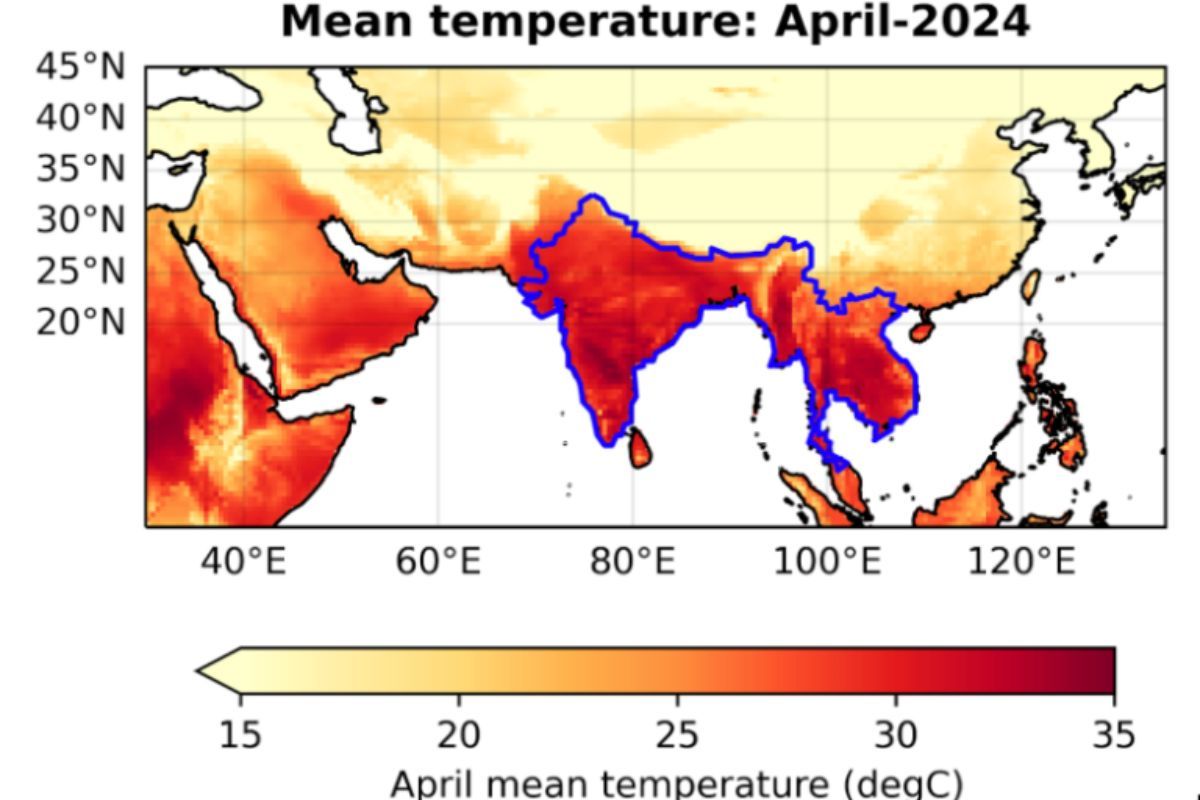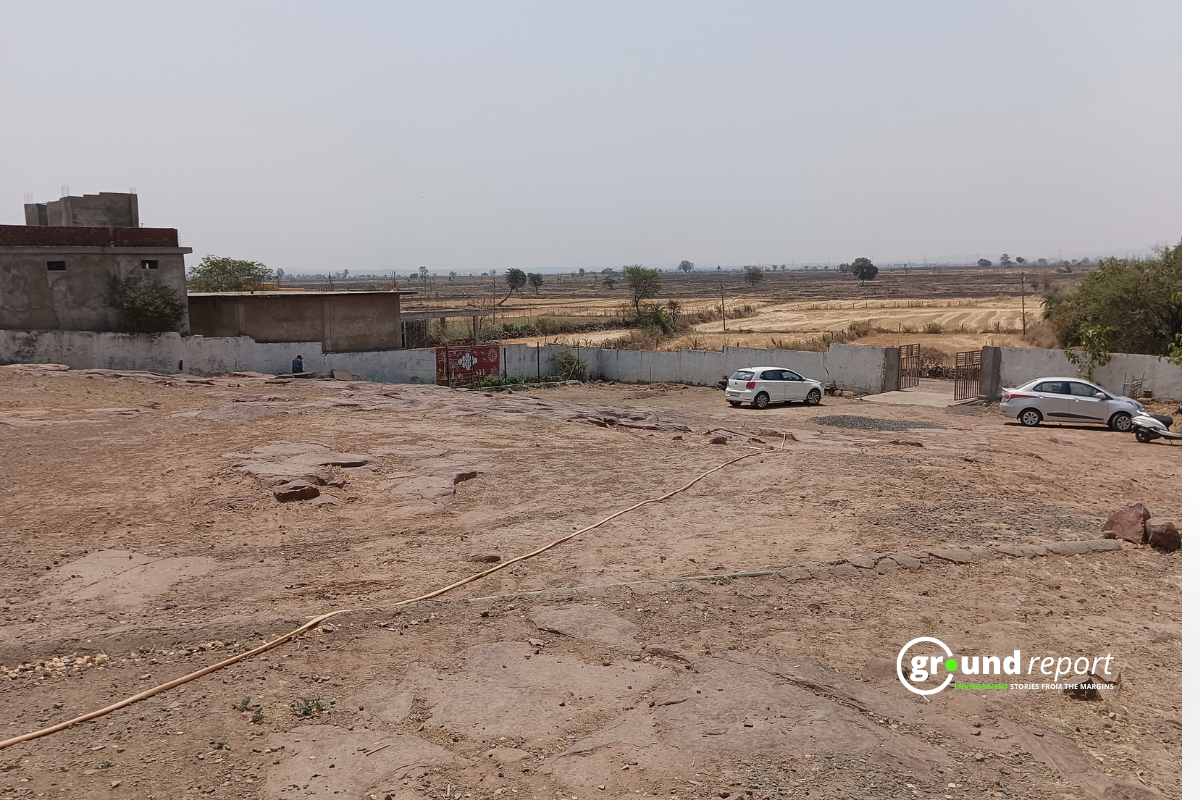In April, a wave of unprecedented heat swept across much of Asia, setting new temperature records and wreaking havoc on communities. The scorching temperatures resulted in numerous fatalities, crop failures, water scarcities, and widespread closures of schools across the continent.
Recent research conducted by a team of 13 scientists from World Weather Attribution (WWA) has revealed that these extreme heatwaves were not only made more probable but also intensified by human-induced climate change. Analyzing both current and historical weather data alongside climate models, the study compared the severity of last month’s heatwaves in today’s climate, which has warmed by approximately 1.2°C, to conditions in a cooler pre-industrial era.
The findings, derived from a swift attribution analysis conducted by the international WWA team, highlight the synergistic impact of global warming induced by climate change and the El Niño phenomenon. This climatic phenomenon, characterized by elevated ocean surface temperatures in the central and eastern tropical Pacific Ocean, acted in concert with climate change, propelling temperatures to unprecedented levels and contributing to the prolonged heatwaves experienced across Asia, including India, throughout April 2024.
According to the document, climate change contributed to a 1°C increase in this year’s heatwave, with El Niño further raising temperatures by 0.2°C. In South Asia, similar 30-day heatwaves were previously expected to occur once every 30 years. However, historical weather data indicates they have now become approximately 45 times more frequent due to climate change. The study underscores the dominant role of climate change, accounting for five-sixths of the temperature rise.
Disaster April for Bengaluru
0 mm rains recorded in the month (avg: 61.7mm). Driest ever April in history & first time Zero mm #BengaluruRains in 4 decades
Feb, Mar, Apr all have seen 0 mm while 2mm in Jan. Dec – April hasn’t seen any significant rainfall, which marks the… https://t.co/lZLKQRY7Om
— Karnataka Weather (@Bnglrweatherman) April 30, 2024
In 2023, the planet experienced its hottest year on record, largely propelled by the El Niño weather phenomenon, which pushed temperatures to unprecedented levels worldwide. Despite the gradual weakening of El Niño, global temperatures have persisted in their upward trend, with April marking the 11th consecutive month of record-breaking temperatures.
In India, temperatures soared last month, reaching as high as 46°C. The eastern region witnessed its warmest April since records began in 1901, with a mean temperature of 28.2°C. Bengaluru, the capital of Karnataka, faced scorching temperatures, surpassing normal levels by 3.1-5°C for a significant portion of the month. The absence of precipitation exacerbated an ongoing dry spell that commenced in November 2023.

Meanwhile, West Asia also grappled with extreme heat, with temperatures surpassing 40°C. In conflict-ridden Gaza, where over 1.7 million people have been displaced, the intense heat further deteriorated living conditions, exacerbating health issues and claiming the lives of at least three individuals, including two children.
According to analysis by the World Weather Attribution (WWA), climate change has substantially heightened the likelihood of such extreme heat events in the region. What has once considered a in-ten-year occurrence in the current climate is now approximately five times more probable, with temperatures soaring 1.7°C higher. Under a 2°C warming scenario, similar heatwaves are projected to transpire roughly once every five years, with temperatures further escalating by 1°C, as indicated by the study.
In South and Southeast Asia, prior assessments by the World Weather Attribution (WWA) had already indicated a substantial increase, ranging from 10 to 30 times, in the probability of experiencing heat events due to climate change. In Southeast Asia, countries like Myanmar, Laos, and Vietnam witnessed record-breaking temperatures in April. Northern and northeastern regions of Thailand recorded mercury levels as high as 44°C. In the southern areas, the average maximum temperature for the month peaked at 37.2°C, the second-highest on record since 2016. The toll of heat-related casualties across the nation has reached 30 so far this year, in comparison to 37 recorded in 2023.

In the Philippines, extreme heat forced the suspension of thousands of in-person classes, with residents describing the conditions as “so hot you can’t breathe.” The study highlights that climate change amplified the recorded heat in the archipelago by approximately 1°C, further augmented by 0.2°C due to El Niño. According to WWA, without human-induced climate change, such a severe heatwave would have been exceedingly improbable. Furthermore, if global warming were to reach 2°C above pre-industrial levels, the Philippines would encounter such events every two to three years, a stark increase from the current frequency of once every ten years.
Asia Hit Hardest By Climate Change
Last month, the World Meteorological Organization (WMO) issued a stark warning, emphasizing that the accelerating pace of climate change in Asia is exacerbating the frequency and severity of extreme weather events, which are profoundly impacting societies, economies, and human lives. The UN agency’s findings revealed that nearly half of all 984,263 climate and natural disaster-related fatalities over the past five decades occurred in Asia, with tropical cyclones claiming the highest toll. In 2023 alone, Asia witnessed a staggering total of 79 water hazard-related disasters, resulting in over 2,000 deaths and directly impacting 9 million individuals.
The World Weather Attribution (WWA) highlighted that heat-related deaths are significantly underreported. Carolina Pereira Marghidan, a Climate Risk Consultant at the Red Cross Red Crescent Climate Centre and one of the researchers behind the WWA study, emphasized the challenges in accurately monitoring and documenting the health impacts of extreme heat. Marghidan stressed the urgent need for comprehensive heat action plans to mitigate the risks associated with rising temperatures, including adjustments to work and school hours.
The Indian Meteorological Department (IMD) reported significant warming trends in East and Northeast India, particularly in average and minimum temperatures, compared to other regions of the country. O P Sreejith, head of climate monitoring and prediction at IMD Pune, highlighted April 2024 as a record-breaking month, with the region experiencing unprecedented average minimum and mean temperatures since 1901. Sreejith underscored that East and Northeast India exhibited the most substantial warming trends, followed by southern states.
IMD records indicated that April’s minimum temperature in the East-Northeast region surpassed normal levels by 1.78°C, while mean and maximum temperatures were higher by 2.01°C and 2.25°C, respectively. Comparatively, the temperature rise in East and Northeast India was over 60% greater than in South Peninsular India, the second most-affected region.
Echoing these concerns, the Working Group I report of the Intergovernmental Panel on Climate Change (IPCC), comprising nearly 3,000 global scientists, projected a significant rise in mean temperatures across cities in South Bengal, Odisha, Jharkhand, and Bihar by the end of the century compared to the pre-industrial era.
Keep Reading
Part 1: Cloudburst in Ganderbal’s Padabal village & unfulfilled promises
India braces for intense 2024 monsoon amid recent deadly weather trends
Support us to keep independent environmental journalism alive in India.
Follow Ground Report on X, Instagram and Facebook for environmental and underreported stories from the margins. Give us feedback on our email id greport2018@gmail.com.
Don’t forget to Subscribe to our weekly newsletter, Join our community on WhatsApp, and Follow our YouTube Channel for video stories.









